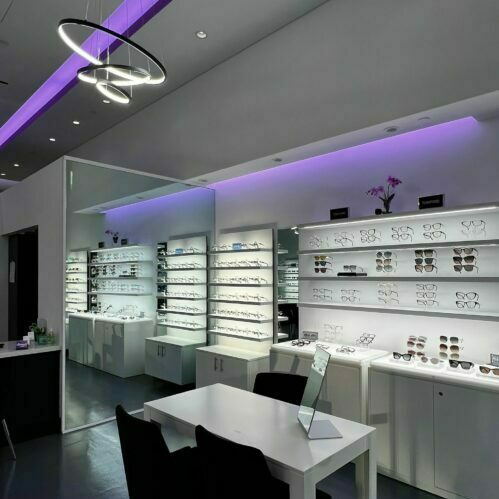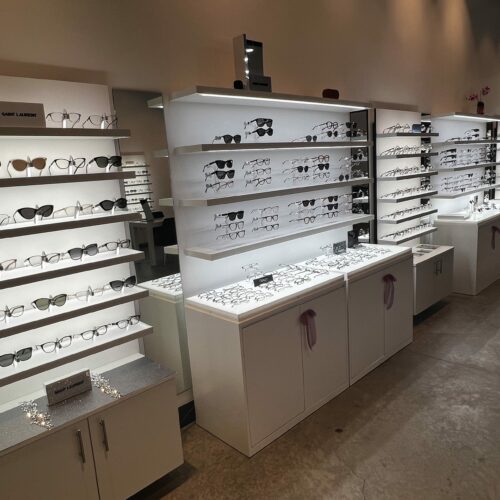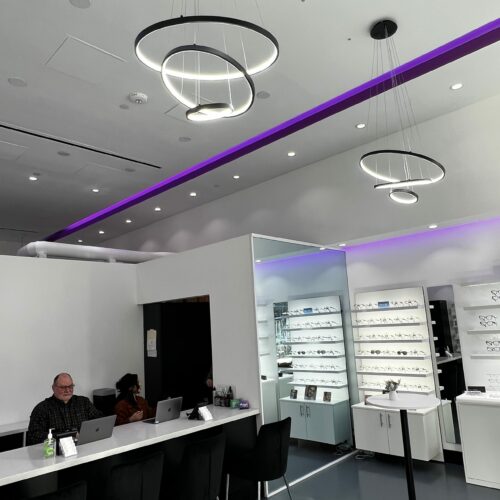See Your Future
Clearly
In 2015, more than 3.22 million American adults were considered to be visually impaired. This population is projected to increase to 6.95 million by the year 2050, as the leading causes of vision loss are age-related eye diseases. However, age is only one factor that can cause eye disease. Other risk factors include systemic conditions, like Diabetes and Hypertension, family history, and medication side effects.
It is crucial to diagnose ocular diseases early to prevent potential vision loss and maintain overall eye health. According to the American Academy of Ophthalmology (AAO), many eye diseases, such as glaucoma, diabetic retinopathy, and age-related macular degeneration (AMD), often have no noticeable symptoms in their early stages. Therefore, regular comprehensive eye exams are essential for early detection and timely treatment. The American Optometric Association (AOA) emphasizes that early diagnosis allows for effective management and intervention, reducing the risk of vision impairment or irreversible damage. Prompt diagnosis also enables the implementation of appropriate treatment plans, including medication, surgery, or lifestyle changes, to prevent or slow down the progression of ocular diseases. Regular eye exams and early detection can make a significant difference in preserving vision and maintaining optimal eye health.
If you’re due for your eye exam, or if you’re concerned about your vision, please come and talk to us.

Protecting Your
Vision

Common eye diseases can be managed effectively if they are diagnosed early enough, and Optical Illusions: An Optometric Practice can help you start your personalized treatment. Early detection plays a critical role in treating all of the conditions listed below, so don’t wait until it’s too late–book an appointment today.
Cataracts
Cataracts are a naturally-occurring condition that affects the normally transparent lens in the eye. With age, the lens begins to cloud over, which interferes with how light enters the eye. Cataracts can range from a mild “haze” over the eye to a completely opaque lens that allows little to no light to pass through.
Cataracts are most commonly associated with aging. As we grow older, the proteins in the lens may break down and clump together, leading to cloudiness. Unprotected exposure to UV damages the proteins in the lens and can accelerate the formation of cataracts. Keep in mind, up to 30% of UV penetrates the clouds, which is why sunglasses are important even on overcast days. Trauma to the eye can cause scar tissue and increase the likelihood of developing cataracts.
Surgery can be performed in healthy eyes to remove the clouded lens and replace it with a clear artificial lens, called an intraocular lens. However, surgery isn’t always an option for some individuals with low vision; in some cases, they may be required to undergo low vision rehabilitation as well.
Glaucoma
This common eye disease is characterized by progressive damage to the ocular nerve—which is responsible for transmitting visual information from our eyes to our brains. Glaucoma results in the loss of peripheral vision, which can cause permanent damage to your sight.
While there are many different types and causes of glaucoma, the most common underlying issue with this disease is high eye pressure. Because glaucoma does not typically present early symptoms, early diagnosis through a comprehensive eye exam is essential. The earlier glaucoma is detected, the sooner treatment can begin, better safeguarding your vision and eye health.
Age-Related Macular Degeneration
Age-related macular degeneration (AMD) is the leading cause of severe vision loss in Americans over the age of 50. Early signs of AMD often go unnoticed due to their subtlety, so it’s common for this disease to progress if left untreated.
There are 2 main types of AMD: wet and dry. When comparing the two, dry AMD is much more common, but wet AMD may cause more severe and rapid vision loss.
Anyone at risk for AMD should not smoke cigarettes, protect their eyes from UV, consume more green leafy vegetables, and take daily AREDS2 eye vitamins.
Diabetic Eye Disease
Diabetic eye disease, also known as diabetic retinopathy, is a serious condition that affects individuals with Type 1 or Type 2 diabetes. It is considered one of the leading causes of blindness in America today. Over time, high blood sugar levels can damage of the blood vessels in the retina causing it to leak blood onto the retina. If left untreated, diabetic retinopathy can progress and cause vision impairment.
Annual eye examinations are essential for early detection and effective management of diabetic eye disease. At Optical Illusions, our dedicated team is committed to providing comprehensive eye care, including specialized imaging for diabetic patients. We prioritize the early identification of potential issues, enabling timely interventions to preserve vision and promote overall ocular health. Itt is essential to safeguard your eyes against the impact of diabetes.
Our Diagnostic Technology
- Dry eye syndrome is a chronic disease that occurs when the tear film is insufficient in protecting and lubricating the eye. It is a multi-factorial condition which requires a multi-factorial approach to treatment and therapies.
- Conjunctivitis (pink eye) may be caused by a variety of external factors such as viruses, allergies, and bacterial infections.
- Degenerative Myopia, also known as pathological or progressive myopia, is a condition characterized by an excessive elongation of the eyeball, leading to severe nearsightedness. This condition can result in progressive vision loss, an increased risk of complications such as retinal detachment or glaucoma, and the need for high prescription eyewear or specialized treatments.
- Asthenopia (Digital Eye Strain) is a condition characterized by discomfort and fatigue in the eyes. It is often caused by extended periods of visual tasks, such as reading, using digital screens, or focusing on nearby objects, and can manifest as symptoms like eye fatigue, headaches, blurred vision, and dryness.


Diagnosing Eye Diseases Early
Optical Illusions: An Optometric Practice leverages the most state-of-the-art in ocular diagnostic tools to ensure you receive the most accurate diagnosis and in-depth treatment possible. Using imaging methods and technology such as Fundus Photography with Optical Coherence Tomography, we utilize equipment like the Optos Silverstone and Maestro OCT imaging equipment to provide our team of professionals with exceptional insight into the presence and progression of eye disease.
Our practices has received multiple recognitions and awards for being the top optometric practice in anterior segment diagnostics on the west coast. We are here to aid you in protecting your vision — Book your appointment in today.
Our Locations

Complete
Family Eye Exams

An eye exam is an essential part of preventive health care. At Optical Illusions: An Optometric Practice, we invest in industry-leading diagnostic technology that gives us an unprecedented view of your eye health and vision.
With this technology, we can provide truly personalized and comprehensive eye care to patients of all ages.
Access high-quality eye care from a team that genuinely cares.



Our Brands







Our Reviews




















